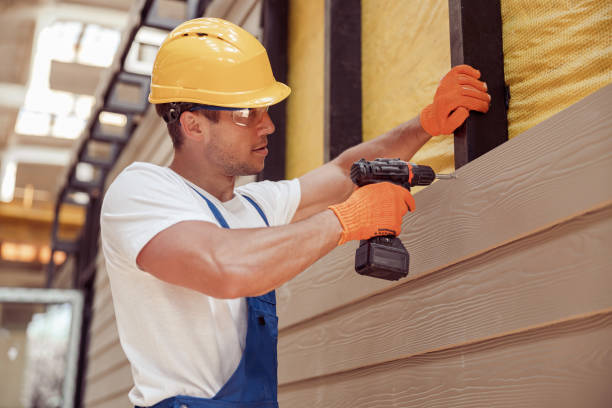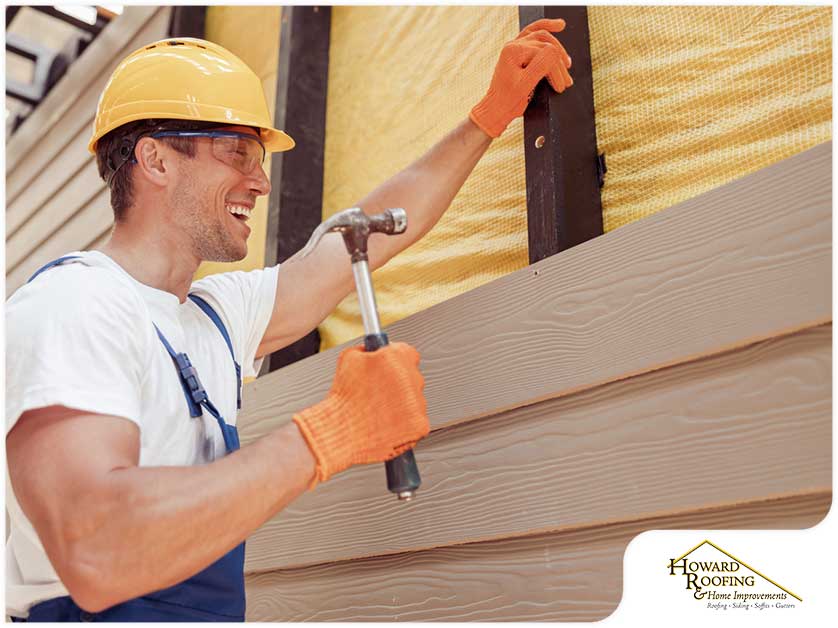The Vital Overview to the Different Kinds Of House Siding and Their Unique Benefits
In the world of home enhancement, selecting the ideal exterior siding is a vital decision that impacts both visual charm and functional performance. The range of products offered, such as timber, vinyl, fiber metal, block, and concrete, each offer one-of-a-kind benefits that cater to various demands and choices. Understanding these differences can significantly improve the long life and value of a property - morris siding contractor. With so many alternatives to consider, which house siding material really stands out for your specific task? Exploring these selections can result in educated decisions that align with both style and usefulness.
Wood House Siding
Timber house siding, a preferred choice for residential exteriors, offers a timeless aesthetic that integrates all-natural charm with structural integrity. This exterior siding product is readily available in various styles, consisting of clapboard, tiles, and board-and-batten, enabling home owners to tailor their appearance to match their style preferences. Timber home siding is normally crafted from long lasting types such as cedar, redwood, or want, which are known for their resilience and ability to withstand ecological stress factors.
Among the primary benefits of wood house siding is its exceptional insulation homes, which can contribute to energy efficiency and reduced home heating expenses. Additionally, wood home siding is naturally degradable, making it an eco pleasant alternative when sourced sustainably. Normal upkeep, consisting of painting or staining, can lengthen its life expectancy and boost its appearance, enabling house owners to protect the natural beauty of the timber.
Nonetheless, prospective disadvantages consist of susceptibility to parasites, rot, and weather condition damage, requiring adequate therapy and maintenance - morris siding contractor. Despite these concerns, when effectively cared for, wood house siding can offer a sturdy and beautiful option that enhances the personality of a home while supplying a cozy, welcoming ambience

Vinyl Siding
Plastic house siding has become a leading option for house owners looking for a low-maintenance outside choice that incorporates sturdiness and affordability. This versatile product is crafted from polyvinyl chloride (PVC), making it resistant to numerous weather problems, including wetness and UV rays. As a result, vinyl siding does not warp, rot, or discolor, ensuring resilient visual allure.
Among the primary benefits of vinyl exterior siding is its considerable variety of designs and colors, allowing home owners to accomplish the preferred try to find their building without the demand for frequent repainting. In addition, plastic house siding is easy to install, which can dramatically lower labor expenses during building or restoration jobs.
Plastic exterior siding additionally adds to power performance. Several options function insulation support, which enhances thermal efficiency, aiding to keep comfortable indoor temperature levels and potentially decreasing energy bills. In addition, its smooth surface area assists in simple cleansing, requiring just periodic cleaning with a yard hose pipe to eliminate dust and particles.
Fiber Concrete Siding
Fiber cement house siding has gotten traction among homeowners and home builders alike as a result of its exceptional mix of toughness and visual flexibility. Composed of a combination of cellulose, sand, and cement fibers, this siding option is crafted to hold up against extreme climate condition, consisting of high winds, hefty rainfall, and temperature level variations, making it a durable option for property outsides.

Among the key advantages of fiber the original source cement home siding is its resistance to parasites, such as termites, and its non-combustible nature, offering improved fire safety. morris siding contractor. Furthermore, it is available in a large selection of designs, shades, and structures, enabling property owners to accomplish their wanted aesthetic without compromising efficiency
Another advantage is its reduced upkeep needs; fiber cement home siding typically needs paint or discoloration every 5-10 years, which is much less frequent than other materials. Moreover, its long life adds to a lower overall expense of possession, as it lowers the demand for frequent repair work or replacements.
Inevitably, fiber concrete house siding stands for an excellent investment for those seeking a durable, appealing, and flexible exterior choice, integrating both type and function to improve the home's visual charm.
Steel Home Siding
The appeal of steel house siding hinges on its durable longevity and modern-day aesthetic appeal, making it a favored choice for contemporary architecture. Readily available in products such as light weight aluminum and steel, steel exterior siding provides a series of finishes and shades, enabling property owners to achieve a customized look that complements their design vision.

Power performance is another significant advantage, as lots of steel siding products are developed with insulation alternatives that aid manage indoor temperature levels. This can result in decreased energy costs in time. Additionally, metal exterior siding is commonly recyclable, making it an eco-friendly selection for sustainability-minded homeowners.
The setup procedure for metal home original site siding can be fairly uncomplicated, causing a quicker turn-around time for building projects. In general, metal siding combines capability and design, making it a functional choice for those seeking a visually enticing and enduring exterior coating.
Brick and Stone House Siding
Brick and stone house siding sticks out as an ageless choice that boosts the aesthetic charm of any kind of home. Understood for their toughness and low maintenance, these products supply an exceptional return on financial investment while raising the property's aesthetic charm. Offered in different colors, appearances, and patterns, brick and rock can be tailored to match diverse architectural designs, from conventional to modern-day.
One of the main benefits of block and stone home siding is their power efficiency. Both materials have all-natural insulating properties that assist control interior temperature levels, potentially decreasing home heating and air conditioning costs. Additionally, they provide remarkable fire resistance contrasted to various other siding options, adding to improved safety and security.
An additional advantage is their longevity. Brick and stone can last for decades, frequently needing very little maintenance past periodic cleansing. Unlike timber house siding, they are resistant to pests and rot, ensuring a lasting exterior that endures the aspects.
Final Thought
In recap, the choice of exterior siding significantly influences a home's aesthetic allure, energy performance, and upkeep requirements. Each kind of home siding-- whether wood, plastic, fiber brick, steel, or concrete and stone-- supplies distinct advantages tailored to numerous house owner preferences and environmental problems.
One of the main advantages of wood house siding is its outstanding insulation buildings, which can contribute to power efficiency and lower home heating costs. Furthermore, timber exterior siding is eco-friendly, making it an environmentally pleasant option when sourced sustainably.One of the primary advantages of steel siding is its resistance to different ecological factors.Energy effectiveness is an additional significant advantage, as lots of steel siding products are made with insulation alternatives that help control interior temperature levels. Each type of exterior siding-- her explanation whether wood, plastic, fiber brick, metal, or concrete and rock-- offers special benefits tailored to numerous house owner preferences and ecological problems.